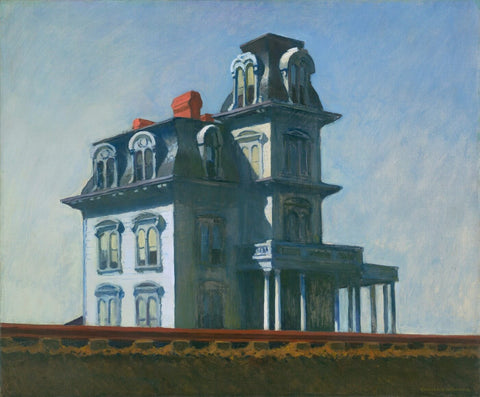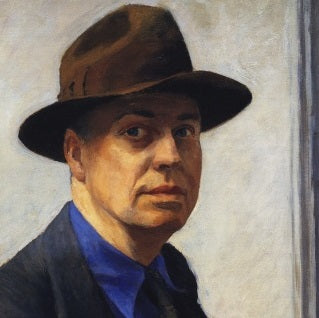
Compact Size
House by the Railroad Framed Print
Framed with Mat •
18x15 inches
|
“House by the Railroad”, a mark of Edward Hopper's artistic maturity, expresses his central theme: the alienation of modern life. Like other Hopper works, is about a lot more than its simple title indicates. This three-story Victorian house with its distinctive Mansard roof sits alone on an elevated plane cut off from the viewer the raised embankment of a railroad, is symbolic of the loss that is felt when modern progress leaves an agrarian society behind. In 1930, this became the first painting to be acquired by the newly established Museum of Modern Art for its permanent collection. |
Buy Posters, Framed Art Prints, Canvas Prints & Large Art Prints

House by the Railroad Framed Print
Framed with Mat •
18x15 inches
“House by the Railroad”, a mark of Edward Hopper's artistic maturity, expresses his central theme: the alienation of modern life. Like other Hopper works, is about a lot more than its simple title indicates. This three-story Victorian house with its distinctive Mansard roof sits alone on an elevated plane cut off from the viewer the raised embankment of a railroad, is symbolic of the loss that is felt when modern progress leaves an agrarian society behind. In 1930, this became the first painting to be acquired by the newly established Museum of Modern Art for its permanent collection.
 Edward Hopper is widely acknowledged as the most important realist painter of twentieth-century America. Hopper derived his subject matter from two primary sources: one, the common features of American life (gas stations, motels, restaurants, theatres, railroads, and street scenes) and its inhabitants; and two, seascapes and rural landscapes.
No one captured the isolation of the individual within the modern city like Edward Hopper. His imagery of figures within urban settings go well beyond their role as modern cityscapes, exposing the underbelly of the human experience. His work demonstrates that realism is not merely a literal or photographic copying of what we see, but an interpretive rendering.
Edward Hopper is widely acknowledged as the most important realist painter of twentieth-century America. Hopper derived his subject matter from two primary sources: one, the common features of American life (gas stations, motels, restaurants, theatres, railroads, and street scenes) and its inhabitants; and two, seascapes and rural landscapes.
No one captured the isolation of the individual within the modern city like Edward Hopper. His imagery of figures within urban settings go well beyond their role as modern cityscapes, exposing the underbelly of the human experience. His work demonstrates that realism is not merely a literal or photographic copying of what we see, but an interpretive rendering.